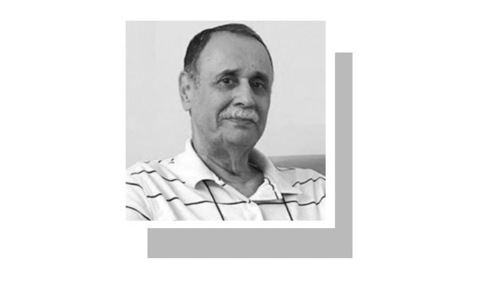PAKISTAN and India have just stepped back from the brink. After several days of hostilities, initiated by India’s unprovoked aggression targeting Pakistan early on May 7, it took American intervention for both sides to silence their guns.
Questions had been raised about Washington’s apparent indifference after the US vice president said that war between Pakistan and India was “none of our business”. But the fact is that hostilities between two nuclear-armed states should concern the international community as a whole. After initial lukewarm calls for restraint, it took a flurry of diplomatic activities over the last 48 hours to broker the ceasefire in South Asia.
President Donald Trump on Saturday afternoon broke the news on social media, which was soon thereafter confirmed by Pakistan’s deputy prime minister. Earlier in the day, tensions were running extremely high.
The military had said that India had attacked three PAF facilities — in Rawalpindi, Chakwal and Shorkot — though all assets were reportedly safe. In response, Pakistan had launched Operation Bunyan-um-Marsoos, hitting several military targets in held Jammu and Kashmir as well as Indian Punjab. Now it is hoped that the ceasefire holds and both states take concrete steps to restore calm.
What is clear is that this was a very different kind of conflict compared to the several wars and mini-wars that both states have fought since independence, including the last major showdown in 2019, following the Pulwama episode. The hostilities, which India launched after continuously blaming Pakistan — without proof — for the Pahalgam tragedy, saw the widespread use of drone swarms and electronic warfare. What was also of note was the role media played, particularly in India, in promoting war hysteria.
Many mainstream Indian outlets, including some respected journalists, had no qualms about peddling pure lies and fake news, such as the fact that the Indian forces had laid numerous Pakistani cities to waste. Now that things are calming down, media and civil society in both states must look inward and examine this inflammatory trend. At the same time, the crisis created a sense of unity within Pakistan, as the people put aside their differences to confront the threat to national sovereignty.
The days ahead will be critical to see whether the ceasefire holds and gives way to relative normalcy. If India had shared its concerns and proof — if any — regarding the Pahalgam attack with Pakistan through diplomatic channels, many precious lives could have been saved, and the violence of the past few days avoided.
Moreover, Pakistan must seek clarity about the future of the Indus Waters Treaty, as the agreement is critical for this country’s economy, food security, and water needs. Also, as we have said in these columns earlier, that while the international community stepped in to douse the flames before they could turn into a conflagration, to expect foreign states to hold the two countries’ hands and walk them through the peace process is unrealistic. While foreign friends can certainly help create a conducive atmosphere, it is Islamabad and New Delhi that will have to do the heavy lifting themselves to secure peace.
UN Secretary General António Guterres has zeroed in on the core issue when he said, following the ceasefire, that hopefully “the agreement will contribute … to addressing broader, long-standing issues” between the two states. And there is no outstanding issue of greater import than the Kashmir question.
The last few weeks have shown that left unattended, the Kashmir dispute remains a powder keg in South Asia, and unless there is a just resolution to this decades-old dispute, the eruption of another round of hostilities might come sooner than expected.
The foreign powers that have helped broker the truce must realise that Kashmir remains the key issue, and communicate this to India. Rebuilding bilateral trust will take time, largely due to the toxic atmosphere that has been created. But the alternative to dialogue is perpetual conflict in South Asia.
Published in Dawn, May 11th, 2025













































